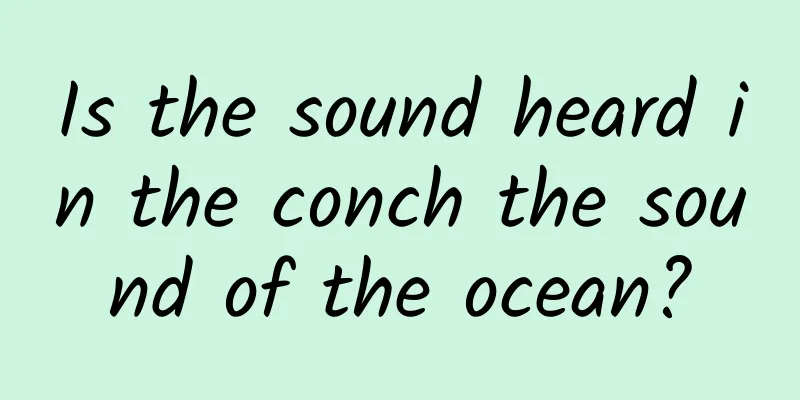Why are there seven suns in the sky?

|
On August 18, 2024, Chengdu citizens captured a breathtaking natural wonder: seven suns appeared in the sky at the same time! As shown in Figure 1, this scene quickly became popular on the Internet, sparking the amazement and discussion of countless netizens, and some even jokingly said, "Hou Yi, it's time to work." So, what exactly is going on? Let's unveil the mystery of this wonderful encounter between light and shadow. Figure 1 Seven-day Consecutive Days (Source: Guangming.com) First of all, it should be made clear that from a scientific point of view, there is only one real sun in the solar system. So how can the appearance of seven suns in the sky be explained? This may be an atmospheric optical phenomenon called "sun dog", or a visual illusion caused by the refraction and reflection of light under certain conditions. As shown in Figure 2, "sun dogs" are a rare atmospheric optical phenomenon that usually occurs when the sun is at a moderate altitude and there are enough high clouds in the sky that can transmit light. There are a large number of hexagonal ice crystals in these high clouds. When sunlight passes through these ice crystals at a specific angle, refraction and reflection occur, forming the illusion of multiple suns in the sky. This phenomenon requires the observer to have an extremely suitable angle to capture this wonder. Figure 2 Principle of sundog and sundog (Image source: Baidu) However, in the Chengdu incident, although "sun dog" is a possible explanation, according to the photographer's description, the picture was taken through glass and the phenomenon could be seen from multiple angles, so this is more likely to be another optical phenomenon - multi-layer refraction and reflection of light. As shown in Figure 3, when light is incident on the upper interface of a single layer of glass, the interface, as the boundary between air and glass, triggers the reflection and refraction of light. Specifically, part of the light follows the law of reflection and is reflected on the interface; while the other part of the light passes through the interface and enters the interior of the glass according to the law of refraction, and in the subsequent process, it encounters the alternating effects of reflection and refraction again on the lower surface of the glass (i.e., the other interface between glass and air). In theory, this process will cycle infinitely between the upper and lower surfaces, generating countless reflected and transmitted lights. However, in practical applications, since the light transmittance of conventional glass is significantly better than its reflective performance, most of the light energy is directly transmitted in the form of transmitted light after experiencing two refractions (one to enter the glass and the other to exit the glass), thereby avoiding the appearance of infinite light. When the scenario is extended to multi-layer glass, the situation becomes more complicated. In this structure, the upper and lower surfaces of each layer of glass act as a medium for light reflection and refraction, causing light to frequently reflect and refract between multiple layers. As the number of glass layers increases, the number of reflections and refractions also increases accordingly, so it is possible to observe the coexistence of multiple light rays in the direction of reflected light and transmitted light. However, because each reflection and refraction process is accompanied by the loss of light energy, as the number of reflections and refractions accumulates, the light intensity of both reflected light and transmitted light will gradually weaken until it is negligible. Figure 3 Reflection and refraction of single-layer glass Figure 4 Overall and local reflection and refraction of laser four-layer glass Figure 4 shows the reflection and refraction of the laser on four layers of glass. The left picture is a real picture of the experimental device. The whole device consists of a semiconductor laser, a stage, a glass slide and a light screen. The laser is irradiated on the multi-layer glass composed of four glass slides, and the light screen is used to receive the image. The right picture is a partial enlarged picture. It can be seen from the picture that after the reflection and refraction of the four layers of glass, seven light spots are received on the light screen, and the light intensity gradually weakens until it is indistinguishable to the naked eye. This phenomenon has nothing to do with the position of the observer. If the number of layers of glass is increased, the number of observable light spots will also increase. The spacing between the light spots is related to the spacing of the glass. The larger the glass spacing, the larger the spacing between the light spots, which is consistent with the theoretical analysis. In the image of the seven-day conjunction in Figure 1, No. 3 is the sun itself, and Nos. 4-7 are formed by refraction and reflection of double-layer glass similar to Figure 4, and Nos. 3-7 also have obvious dimming effect, which is completely consistent with the characteristics of multi-layer glass refraction and reflection imaging. Nos. 1 and 2 may be formed by the deformation of a layer of glass, resulting in imaging in another direction. In short, these seven suns do not really exist, but are visual phenomena formed by multiple refraction and reflection of sunlight in the glass. |
>>: The mysterious archaea discovered by accident can "revive" old oil fields
Recommend
How much does it cost to customize a large turntable mini program in Huangshan?
How much does it cost to customize the Huangshan ...
Sony ridicules PSVR: How to resolve the contradictions in the early stages of virtual reality development?
If Samsung had told everyone in advance that the ...
How long does it take to orbit Mars? The answer is not certain!
(Image credit: Nissian Hughes/Getty Images) Human...
2020 Guangxi College Entrance Examination Score Line 2020 Guangxi College Entrance Examination Score Line Announced
On the morning of July 23, the Autonomous Region ...
Li Dongmin of Juefei Technology: Autonomous driving technology has entered the ecological era, and China's path is leading the world
In the past 2020, new energy vehicles that have s...
How to avoid being eaten by female insects? Male insects have their own tricks
Insects are the most numerous type of animals in ...
Simple and practical! The linear iteration method created by three Germans surpassed an era
December 26th this year marks the 200th anniversa...
2014 TOP100 Open Source Software
I don't know when it started, but many people...
Soapberry: I am a relative of longan and longan, and I am also the "cleaning master" in the plant world
Painted by Qi Yunzhi In early spring, tender goos...
Ministry of Industry and Information Technology: 2017 Industrial Internet of Things White Paper
At present, the Internet of Things has entered a ...
How to do ASO for news and information apps—taking Toutiao as an example!
Mobile Internet is constantly changing our way of...
How much does it cost to rent a server for an app for a year? How much does it cost to rent a server for an app?
In the 5G smart era, each of us has a smart phone...
Five Nobel Prizes are related to it. Why is vitamin B so important?
Tuchong Creative In recent years, vitamins have b...
Promotion methods of APP new media marketing!
The basic tone of the APP operation and promotion...
Tips and operation strategies for increasing followers on Douyin and Kuaishou
The directory of shared content is here: “Know Yo...





![2022 Virtual Project Practical Guide, How to Build a Store with a Monthly Income of Ten Thousand Yuan from Scratch for Beginners [Video Course]](/upload/images/67cc16787e9ed.webp)



